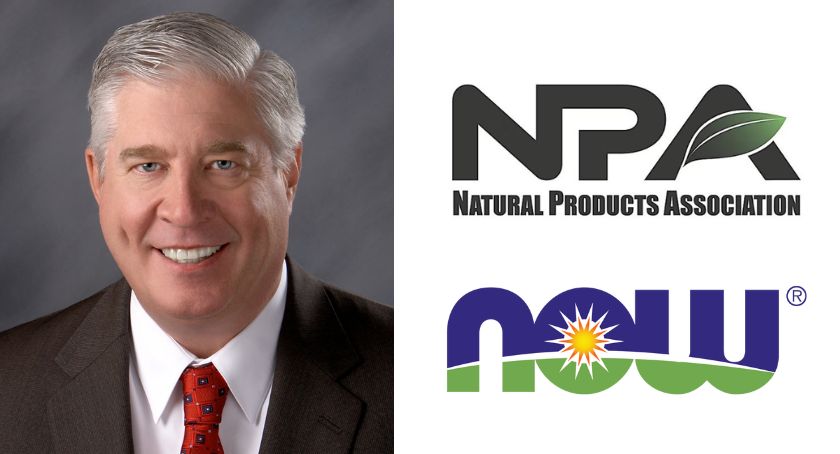Exclusives
Good-For-You Candy
Global confectioners are formulating candies that do more than just taste good.

By: Joanna Cosgrove
Good-For-You Candy
Global confectioners are formulating candies that do more than just taste good.
By
Joanna Cosgrove
Online Editor
 |
Anti-cavity lollipops are just the tip of the iceberg. Nowadays, big brands like Wrigley, Mars and Trident are investing in the functional candy movement because they realize this vein of new product development is the key to reviving flagging annual sales revenues. According to Indulgence and Health in Confectionery – Emerging Natural, Functional and Wellness Trends, a report issued by London-based Business Insights Ltd. and written by Helen Lewis, the overall confectionery market does not have especially strong growth rates. “It is an established, mature and long-standing category within the global food market, which is characterized by low but positive growth,” the report stated. “Health offers new opportunities for growth.”
Now more than ever, consumers worldwide are passing on traditional candies in favor of those with functional benefits because they are more attuned to dietary concerns related to conditions like obesity and cardiovascular disease. “Weight management is a growing trend within the global food and drinks marketplace,” the report said. “Although confectionery brands have been criticized for contributing to the rising number of overweight and obese people in the world, there is potential for credible and innovative brands to shake off this reputation and offer weight management products to people who are following low-calorie and/or low-fat diets.”
Functional Chocolates
The Business Insights report listed many functional candy standouts that successfully integrate wellness attributes with great taste. Some of the most noteworthy products are in the chocolate category. Among those highlighted was Dove Vitalize Dark Chocolate. Introduced in early 2008 by Mars Snackfood U.S., the dark chocolate was enriched with “healthful ingredients like energy-releasing B vitamins, plus the natural goodness of cocoa flavonols which may help support cardiovascular health and plant sterols which have been shown to reduce cholesterol.”
In 2006, Vere Chocolate of New York, NY, launched a line of 75% dark chocolate bars it called the “Healthiest chocolate on the market” touting less sugar than an apple, all natural sweeteners that do not spike blood sugar levels like regular chocolate, “Crazy antioxidants” (a 30 oz. bar has more antioxidants than two pounds of broccoli), more fiber than a slice of whole wheat bread, and the prebiotic inulin for immune system support and to promote healthy digestion. The chocolate was promoted to be premium artisanal chocolate that would lower blood pressure, improve heart health and blood flow, reduce cholesterol levels and improve mood.
Individually wrapped Choconella Passionate Organic Dark Chocolates were introduced in the U.S. in March 2008 by Phytobase Nutritionals, Inc. Sold in a resealable jar, company literature states: “Choconella is a bite-size organic dark chocolate treat” that is “infused with a unique combination of Goji berries and exotic Amazonian and Siberian herbs.” According to the product marketing, the combination of Goji berries and Siberian herbs can increase libido and energy levels, reduce stress, support memory and mental clarity, and enliven the mood.
One of the most recent launches in the functional chocolate segment is Frutels anti-acne chocolates, from the New York, NY-based company by the same name. The chocolates are a delivery vehicle for a unique nutritional formula that the company claims to support the body “against the internal causes of acne—hormones, diet and stress.”
Frutels maintained that diet is the key to remedying acne. “Epidemiological studies of non-western cultures have shown that people eating traditional low-sugar diets have virtually no acne,” said company founder, Ellie Sawits, who has a degree in Public Health from Columbia University. “When these people start eating a Western diet, they develop acne. Substantial peer-reviewed research now clearly demonstrates the link between acne and nutrition.
“Frutels chocolates for acne work because they contain a nutritional formula that supports your body against the internal causes of acne,” Ms. Sawits continued. “We all know that acne starts inside your body, with hormones, diet and stress, and it’s obvious that the cleansers and creams on the market don’t solve those problems. The results for Frutels nutritional approach speak for themselves: in-house and independent testing shows that 73% of people saw positive results in two weeks or less!” Consumers are advised to consume two to four Frutels chocolates per day, depending on the condition of their skin.
The company’s premium, sugar-free natural dark chocolate anti-acne candies were preceded by anti-acne gummies, which were launched in 2006. According to the company, “Frutels is an evidence- and results-based product that commercializes cutting edge research for the mainstream. One hundred years of research have gone into discovering the function of vitamins and minerals in supporting our bodies’ natural defenses against a whole host of problems. Frutels reviewed a lot of this research to discover which vitamins and minerals could attack the root causes of acne. We created a formula that would support the body’s own defenses against acne by regulating hormone fluctuations, supplying critical micronutrients absent in poor diets and alleviating the effects of stress on the body.”
Frutels chocolates cost $9.49 per box and Frutels gummies cost $6.29 per pack.
Sport Beans
Since 1976, Jelly Belly has been renowned for its incredible array of intensely flavored brand of jelly beans. In 2005 the company launched a scientifically formulated, functional extension for athletes called Sport Beans, which contain 25 grams of carbohydrates, electrolytes and vitamins in each one-ounce serving to help maintain hydration and replenish nutrients. In addition, Sport Beans contain thiamin (vitamin B1), riboflavin (vitamin B2) and niacin (vitamin B3) to help burn carbohydrates and fat, as well as vitamin C to protect muscles and cells against oxidative damage.
The nutrient levels in the beans are based upon established recommendations from the American College of Sports Medicine, which recommends consuming 30 to 60 grams of carbohydrate per hour during exercise lasting 60 minutes or more. These guidelines also recommend drinking 1/2 to 3/4 cup of water every 15 to 20 minutes and to include the electrolyte sodium at a set level. In a study conducted by the University of California Davis School of Medicine Sports Program, Sports Beans were proven to be as effective as popular sports drinks and gels in maintaining blood sugar levels and improving exercise performance in competitive endurance athletes. The company advises athletes to consume on packet with one to two cups of water 30 minutes prior to exercising. During their workout, athletes can aim to consume one packet every 45 minutes. Post-workout the beans can be consumed as needed to “help replenish muscle stores of carbohydrates.” The goal is to take in roughly 120 to 240 calories per hour of extended exercise or activity along with 1/2 cup of fluid every 15 to 20 minutes.
Sport Beans are available in four flavors: Lemon Lime, Orange, Berry Blue and Fruit Punch. More recently, Jelly Belly launched Extreme Sport Beans jelly beans, a caffeinated version of original Sport Beans available in two flavors: Cherry and Watermelon.
Fortified Gums
Like chocolates and jelly beans, chewing gums have also evolved to be functionally sound. No longer just sugar-free, Trident and Wrigley brand gums are leading the charge to formulate gums that strengthen and protect teeth from decay.
Trident Xtra Care, part of the Cadbury family of brands, contains Recaldent, a unique form of calcium that is clinically proven to protect, strengthen and rebuild tooth enamel. Recaldent is derived from milk and increases tooth remineralization (strengthening) over and above just the salivary stimulation from regular sugar-free gum.
Cadbury holds the exclusive rights in the U.S. to use Recaldent in gum and Trident is the only gum brand that contains this special ingredient. Launched in May, Trident Xtra Care is available in Peppermint and Cool Mint flavors. Single packs cost $1.49 and multi-packs cost $3.29.
To freshen breath and kill the germs that cause bad breath, Wrigley turned to magnolia bark extract (MBE) for its Breath-Freshening Eclipse Gum and Mints, both of which will be fully rolled out by next month. The products were developed after a 2007 Wrigley study revealed the germ-killing benefits found in MBE, which has origins in traditional Chinese medicine.
Eclipse gum with MBE is available in Spearmint, Winterfrost, Polar Ice, Peppermint and new “Fresh & Cool” flavors. Eclipse mints with MBE will be available in Spearmint, Peppermint, Winterfrost and Cinnamon Inferno.
In a press release, Wrigley scientist Dr. Michael Greenberg said that the most common way to treat bad breath has been to mask it with flavor found in chewing gum and mints, or to kill the bacteria that cause bad breath with antimicrobial agents found in many mouthwashes or toothpastes. The antimicrobial agents found in many mouthwashes and toothpastes could never be used in gum and mints because of poor taste, possible tooth staining and over-the-counter drug classification, he said.
Wrigley’s research pertaining to MBE, published in the Journal of Agricultural and Food Chemistry last November, demonstrates that MBE helps kill the bacteria that cause bad breath, in addition to Streptococcus mutans, the bacteria involved in tooth decay. But unlike agents found in mouthwash, it can be fully incorporated into food-based mints and chewing gum for killing bacteria that cause bad breath.
In vitro results indicated mints containing 0.2% MBE reduced more than 99.9% of three oral bacteria within five minutes of treatment. In vivo results demonstrated mints containing MBE reduced total salivary bacteria by 62% at 30 minutes and 34% at 60 minutes after chewing. Gum with MBE reduced total salivary bacteria by 43% at 40 minutes, while placebo gum reduced total salivary bacteria by only 18%. The study also revealed that MBE helps kill some bacteria involved in dental caries formation.
Bright Future
The Business Trends report asserts that the functional confectionery segment is poised for real global growth and the U.S. is seen as its leading consumer. In the U.S., the category grew 6% from 2001 to 2006, and was worth an estimated $1.53 billion. It is projected to grow another 4.4% by 2011, to an estimated $1.9 billion.
In the coming years, marketers will no doubt be hard at work developing functional confections in an effort to capture the attention of consumers in search of something sweet that has more to offer.





















